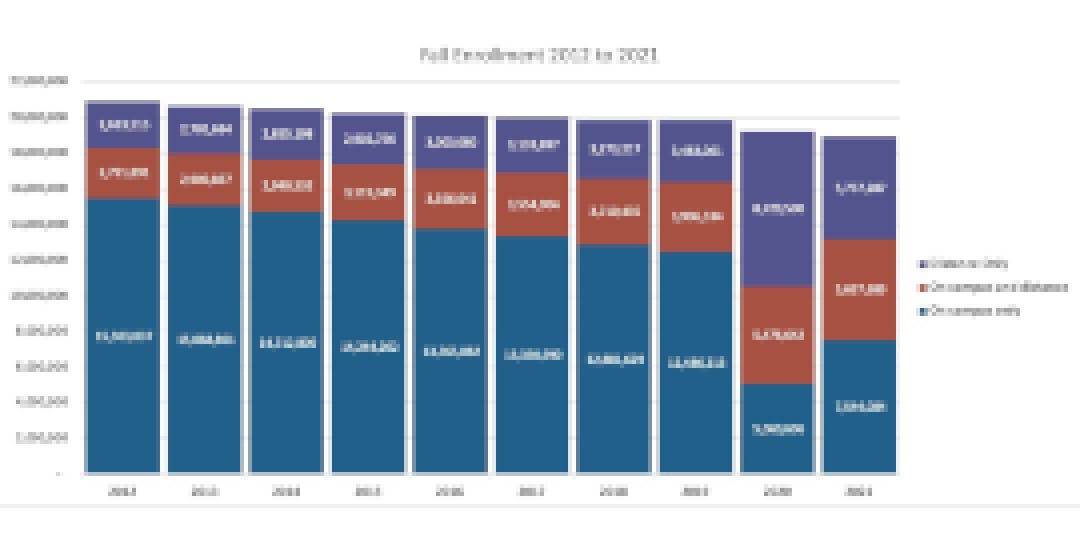Most of us know what to expect in a face-to-face classroom: Students sitting in rows, facing instructors and listening to lectures, watching videos displayed on screens up front, or, in smaller classes, participating in lively discussion. Altogether, a modest set of conventional choices we’re all familiar with as students and faculty on campus.
But in the last couple of decades, since the introduction of online instruction in higher ed, students now expect a much wider range of options — a collection of novel approaches, inconceivable before the digital revolution, including participating online in breakout rooms, joining online study groups, watching recordings of class sessions posted later for study and reflection, and more.
But are colleges paying attention to what online students want most? Are virtual classes delivering what they expect?
These days senior college leaders should be eager to find out, as enrollment overall is falling even while interest in online courses is on the rise. A recent analysis of federal government data by Jeff Seaman of Bay View Analytics shows that enrollment in on-campus courses fell nearly 11 percent in the past decade and almost 30 percent from 2020 to 2021. In contrast, enrollment in online courses shot up from nearly 34 percent over the 10-year period and leaped 110 percent in the first years of the pandemic.

So do we know about what these students value most?
Surveys of remote college students show that their top priorities are convenience and flexibility. After all, about 70 percent of online students work, while in the wider college population, only about 40 percent are employed.
Many depend on accessing course resources and lessons seamlessly from online textbooks or other digital resources. Others find it enriching to participate in online chat and polling. Those who live in remote areas of the U.S. or in disadvantaged countries abroad that lack robust broadband options depend on mobile devices to participate online.
Remote students also want the kind of services their on-campus peers get — robust academic and technical support, job-ready curricula and links to employers. And just like those on campus, they’re eager to win scholarships and receive financial support.
Many students expect their online courses to be completely on-demand (what’s known as asynchronous), so that they can tune in as they carve out time between jobs and other life responsibilities. A survey of online students conducted by Wiley found that 69 percent preferred asynchronous classes in fully online programs, with no requirement to visit a campus.
But a different survey of students published in Frontiers of Education concluded that college students prefer real-time interaction online (known as synchronous instruction) such as showing up on Zoom to a class held at a specific day and time together with other classmates. The sharp difference in results comes from whose opinion counted. This survey asked a broader group of students, while the Wiley study quizzed those in online programs only.
It turns out, luckily for online students, that the most common type of remote instruction for undergraduates is asynchronous, according to the CHLOE report from Quality Matters of chief online learning officers — a result that came as a surprise to me, since most faculty members prefer in-person teaching. For years, it’s been a struggle for many college faculty to adapt to online instruction. Even though Zoom and other video conferencing systems have opened classrooms to remote students, the habit of delivering lectures in real time is hard to break, and that doesn't translate as well online.
If you're looking to uncover whether colleges and universities are delivering what remote students want, the recent Quality Matters report offers insights with mixed signals. With only about 40 percent of online officers saying their institutions are fully ready to give it all they’ve got, it suggests that higher ed is only moderately prepared to deliver the digital bells and whistles remote students are looking for. An almost equal fraction of online officers hesitate, saying that their colleges need time to do the right thing.
For centuries, higher ed was the province of scholars, with faculty determining the scope and nature of what constitutes knowledge, what students learn and how they learn it. In the digital age, faculty no longer occupy the seat of authority alone, but must share it with their students.
If colleges are serious about attracting new streams of online learners to solve their enrollment challenges, leaders must move full speed ahead with online options and support.


